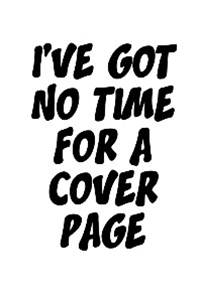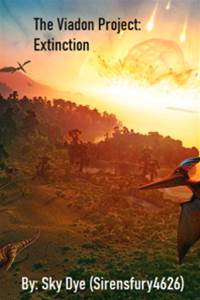《IGCSE BIOLOGY》Topic 4
Advertisement
Topic 4 [Biological Molecles]
---
Two Types of Compounds:
:
- Contain carbon and hydrogen
- E.g carbohydrates, proteins, lipids, nucleic acids
:
- Do NOT contain carbon
- E.g water, mineral sals
:
> Contains Carbon, C; Hydrogen, H; Oxygen, O;
> The C:H:O ratio is 1:2:1
Types of Carbohydrates by order of complexity (Starting from the simplest):
(Simple Sugars)
- E.g Glucose, Fructose, Galactose
(Complex Sugars)
- E.g Maltose, Sucrose, Lactose
(Polymers)
- E.g Starch, Cellulose, Glycogen
:
Characteristics:
Example: (Glucose)
- Made out of six carbon atoms joined in a ring, twelve hydrogen atoms and six oxygen atoms
- Formula: C6H12O6
:
Two simple sugar molecules (Monosaccharides) joined together to form a complex sugar which is larger.
Characteristics:
Examples:
1. = Glucose + Fructose
> Found in fruits
2. = Glucose + Glucose
> Found in malt sugar
3. = Glucose + Galactose
> Found in milk
: (A polymer)
Many glucose molecules that act as a repeating unit and join together to form a very large molecule.
Characteristics:
Examples:
1.
> Used as a food storage in plants
2.
> Used to build plant cell walls
3.
> Used as a food storage in animals
:
> Contains Carbon, C; Hydrogen, H; Oxygen, O; Nitrogen, N; Sulphur, S (Only in some proteins);
> Made of long chains of smaller molecules () joined end to end.
> Each protein is made of amino acids in a precise order.
Long chains of amino acids and for three-dimensional shapes of proteins. This is determined by the specific sequence of amino acids. The different sequences of amino acids then lead to different shapes of protein molecules.
:
- Different shape of proteins leads to different active sites of different (To bind to different substrates)and binding sites of (To bind to pathogens).
Advertisement
:
- Contains Carbon, C; Hydrogen, H; Oxygen, O;
Characteristics:
> : Solid at room temperature
> : Liquid at
Fats and Oils:
- A fat molecule is made of four smaller molecules joined together:
1.
2. Three molecules of
: (A monomer)
Two Types:
- Always present in nucleus, within genes and chromosomes
- Contains genetic information
- Inside cytoplasm, particularly in ribosomes
- Reads the information from DNA and assembles amino acids into proteins
:
- Contains genetic information inherited from parents
:
1. Made of , each with a series of .
2. The on the two strands are held together by .
3. The twist together into a spiral called the . The structure makes DNA more stable.
4. There are four kinds of bases: A (Adenine), C (Cytosine), G (Guanine), T (Thymine). [There is no need to memorise the names, just remember ACTG]
5. Base A always pairs up with Base T. Base C always pairs up with Base G.
:
- Almost 70% of the body is made up of water (Cytoplasm, blood, tissue fluid etc).
- Contains Hydrogen, H; Oxygen, O;
- Water is NOT an organic compound.
:
- A solution of many different substances in water.
The spaces between our cells are also filled with .
:
Water dissolves most substances needed for , , and .
(Blood, as blood is made out of plasma and plasma is water)
Dissolved substances can be transported around the body.
Water is needed to dissolve and in the alimentary canal, where digestion takes place.
Kidneys remove the waste product, , from the body. Urea is dissolved in water, forming .
---
Tests:
:
- To test for the presence of reducing sugars (e.g glucose)
Procedure:
1. X amount of Benedict's reagent is added to X amount of the solution that you want to test (Both have equal volumes).
Advertisement
2. Mixture is in a boiling water bath for 2-3 minutes. The optimum temperature for Benedict's reagent is around 60-80ºC.
3. Positive result is an orange/brick-red colour. (Note that brick-red symbolises a higher concentration of reducing sugar). The Benedict's reagent changes from blue, to green, to yellow, to orange, to brick-red.
4. Negative result is when the Benedict's reagent stays the same colour (Blue).
**Note: Iodine solution is actually , and it is safer to write Potassium Iodide rather than Iodine's solution.**
- To test for the presence of starch.
Procedures:
1. Add a few drops of Iodine solution.
2. Gently shake the mixture.
3. Positive result is a deep blue-black colour.
4. Negative result is when the solution stays the same colour (Orange-brown).
:
- To test for the presence of proteins.
Procedure:
1. Add a few drops of Biuret reagent.
2. Gently shake the mixture.
3. Positive result is when a mauve/purple colour is formed.
4. Negative result is when the mixture stays the same colour (Blue).
**The Biuret test is never heated as high temperature denatures/changes the shape of proteins.**
(2,6-Dichlorophenolindophenol)
- To test for the presence of vitamin C.
Procedure:
1. X amount of DCPIP reagent is added to X amount of the solution that you want to test (Both have equal volumes).
2. Positive result is when the solution turns colourless.
3. Negative result is when the solution stays the same colour (Blue).
A replacement test for DCPIP could be starch + iodine. The colour change (If vitamin C is present) would be from brown, to dark blue, to colourless.
:
- To test for lipids
Procedure:
1. Add ethanol to the solution that you want to test.
2. Gently shake the mixture, then pour it into a test tube filled with an equal volume of distilled water.
3. Positive result is a milky-white emulsion.
Explanation:
Lipids are insoluble in water, but are soluble in ethanol. When ethanol is added to the solution, the lipids dissolve to form a colourless solution. However, when the mixture is added to water, a milky-white emulsion forms. This is because ethanol loves water than it loves lipids, so it binds to water. The lipids then have nothing to bind to, and revert back to being insoluble, therefore a milky-white emulsion occurs.
---
Advertisement
- In Serial337 Chapters

The Immortal's Wine Store
A Heavenly God was transmigrated into a different world right after he died. After arriving in that world, he resides in the body of a handsome young man with a mechanical voice inside his head providing him with missions. It also kept on telling him to brew wine every single day.
8 3783 - In Serial10 Chapters

Level Up Lord
Just the story of Karl who will become a strong and rich noble (or perhaps better) after being reincarnated into a fantasy world. *The summary may cause irrational hate for an unknown reason* *Greatly inspired by korean novels* *This novel is maybe written in Engrich* *Probably not very original* *Certainly not meant to be well-written* *Invisible Dragon is perhaps better than this novel* *Nobody forces you to read so you are reading this at your own risk* *You are supposedly not supposed to read this novel* *You read this and didn't like it? No problem*
8 183 - In Serial12 Chapters

The Viadon Project: Extinction
In the year 2080, a group of fanatics believed that the world was going to end. In order to save the human race from extinction, a man named Damian Hunts created a time machine and travelled back in time to the Cretaceous Period alongside his fellow believers. They built a massive city on the continent of Laramidia, and named it Viadon. To keep their future generations from travelling back to a broken future, Damian and the Founding Families destroyed the time machine and created a their own version of history, completely leaving out the fact that they had time travelled, and that the Mass Extinction would happen thousands of years later. Two-thousand years later, the future generations of Viadon have no idea of their ancestors pasts, but things start to unravel quickly as Time Travelers come to warn them of impending doom. Vocabulary:Laramidia: was an island continent that existed during the Late Cretaceous period (99.6-66 Ma), when the Western Interior Seaway split the continent of North America in two. Disclaimer: I do not own the artwork used for the cover, all credit goes to it's original creator.
8 147 - In Serial18 Chapters

Book of Fates: The Forgotten Shores of Ferax
‘Book of Fates is an epic fantasy serial we publish weekly on www.bookoffates.com website and here. But there’s a twist! Each new chapter ends with a poll. You, the reader, get to vote between three options for how the story continues the following week. Have fun & vote responsibly!
8 226 - In Serial9 Chapters

Zero Sanity
9 students all around the country are gathered unknowingly to be the test subjects of a mysterious experiment that asks, "How far can the mind be stable?" The 9 students who have no recollection on how they got on the unknown experiment will now have to work together to escape, win and learn the truth about the experiment, and why they're there in the first place. Experiment: Zero Sanity, will now commence. ________ First time writing a story. I am actually having fun writing this and I want to make this short. hahaha
8 626 - In Serial21 Chapters
Imaginary Railroads
Fred Fosswell has invented the RAIL system to use for tabletop gaming and one on one dueling. He has asked for game masters and players to demonstrate it for the public. Now five game masters and their players vie for prize money and bragging rights if they can complete twenty quests during play.
8 146






 Prev Chap
Prev Chap Next Chap
Next Chap Chap List
Chap List
 Boy
Boy Girl
Girl
